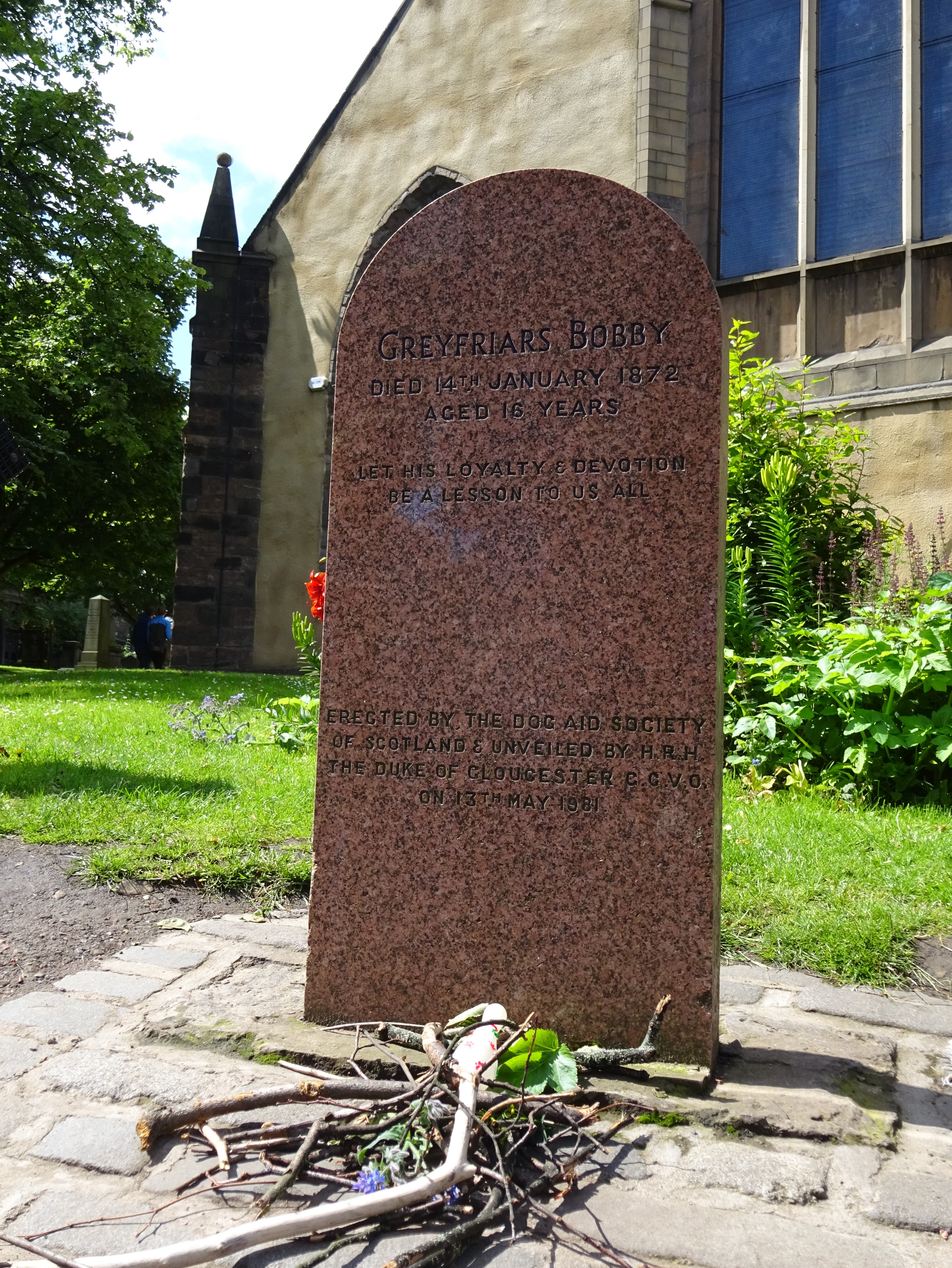Ten Edinburgh Legends That Can Be Visited For Free

This week, our blog will focus on free and interesting places to see in Edinburgh.
Nat is a travel blogger from the UK, her website focuses on backpacking and budget travel. Currently, travelling around Mexico, Scotland will always hold a special place in her heart and is a destination she is often drawn back to.
She joined Macbackpackers on a 5-Day Highland Fling tour a few years ago, you can read about it on her site.
Here she shares with us some of her favourite places to visit in Edinburgh before and after a Macbackpackers trip. And the best part, they’re all free to visit! Plus they have an interesting tale behind them.
You can also follow Nat's adventures on Facebook, Twitter and Instagram.
Photo credit: Nat/Natpacker
Ten Edinburgh Legends That Can Be Visited For Free
Edinburgh is a great place to visit, there’s so much to see and do and plenty of variety. The city is divided into two parts, the Old Town and the New Town, which are separated by Princes Street. The Old Town is situated on and around the hill on which the castle perches. It is only about a mile long and 300 yards wide. This area consists of the medieval part of the city, with narrow, windy streets and medieval style buildings. North of Princes Street the New Town can be found. This area is about 200 years old and a complete contrast to the Old Town, with broad, wide streets and a symmetrical layout. Originally the New Town was built as a residential area but is now dominated by retail, business and commercial life.
Being the capital city of Scotland, there is obviously a lot to do and see. However, it is surprising how many free attractions you can find in the city. Many of these attractions have stories and legends associated with them. Some stories are famous and well known, some are not well known about, some are completely fictional, some are true, others are debatable. Some are dark, some are light-hearted and some are just downright weird.
Here are ten free attractions associated with Edinburgh's stories, history and legends.
Voldemort’s Grave
For Harry Potter fans, this is a must! In Greyfriars Kirkyard you can find Voldemort’s Grave or at least the grave that is believed to have been the inspiration for the Dark Lord's true name. The grave is that of Thomas Riddell who died in 1806 at the age of 72.
JK Rowling often walked through the graveyard and is believed to have been inspired by several names found on the gravestones. The graveyard is overlooked by the Elephant House Cafe, where she wrote some of her books. She has previously said that the gravestone of Thomas Riddell Esquire may have subconsciously inspired the character’s true name.
Covenanter’s Prison
Now for a much darker side to Greyfriars kirkyard… For here you can also find the Covenanter’s Prison. Here 400 Covenants were held for over 4 months, in inhumane conditions, as they waited for their trail. They had no shelter and were given just 4 oz of bread a day as their food ration. Of this 400, some died, some were executed, some were freed and 250 were sentenced to transportation. This 250 did not fare well though, as their ship sank off the Orkney Islands, so many of them also died.
Surprisingly though, supernatural legends surrounding this prison are not linked to the prisoners, but their chief prosecutor, Sir George Mackenzie. Visitors have reported a variety of ghostly happenings and even physical attacks. This all started in 1999, just after a homeless man entered the tomb, seeking shelter and desecrating it. Some people believe that the homeless man woke the spirit of Mackenzie, who now haunts the area.
National Museum Of Scotland
You may be wondering what a museum is doing on this list, well it contains something connected to one of my favourite dark stories of Edinburgh (and has no entrance fee).
In this museum, you can find 8 miniature coffins, with dolls inside. These coffins were found in a small cave on Arthur’s Seat by a group of young boys in 1836. There were actually 17 of these miniature coffins and dolls, but only 8 survive and are on display in the museum.
These coffins have proved something of a mystery and there are plenty of stories surrounding them. Some believe them to be linked to witchcraft, others think that sailors kept them with them to ward off death. But personally, I like the idea that they represent the 17 victims of Burke and Hare.
Burke and Hare, also known as the “Bodysnatchers”, murdered 17 people and sold the bodies to the University for medical research. They were eventually caught and tried for their crimes. During the investigation, Hare turned to gain his freedom by giving evidence against Burke, who was then convicted and hanged. It could be that someone who knew Burke and Hare made the dolls, but I like the idea that Hare made them after the trail, as he felt guilty for the murders and for turning on Burke.
Arthur’s Seat
If you like the dolls, you should also see the place they were found, Arthur’s Seat. So it’s linked to the same story, which is why I’ve included it, but it also has its own stories.
Firstly, no one knows why the hill is called Arthur’s Seat. There are plenty of ideas as to why it is called this, but none are (or probably ever will be) proved. Also, there is an old Celtic Legend that says the rock is actually a dragon. The dragon used to terrorise the reign, eating all the livestock and all the other things dragons tend to do. One day the dragon ate so much that it lay down and went to sleep, and it has not woken up yet.
Mercat Cross
On the Royal Mile, just outside St Giles Kirk, you will find the Mercat Cross. First erected to display the burgh’s right to trade, the Mercat Cross also served as a place for public announcements to be heard and a way of punishment. It was even known as “the dreaded theatre of public punishment”. Criminals would be tied to the cross for hours, during which time the public could throw anything at them, such as eggs. Some people would even be nailed to the cross by their ear as punishment, giving them the choice: stay where they were for the allotted hours and put up with the abuse from the public or tear away. However, tearing away would cause the criminal be forever branded as a criminal by the damage done to their ear.
Brodie’s Close
Just off the Royal Mile, Brodie’s Close can be found. This was once the site of a mansion where the Brodie family once resided. The Brodies, or at least one member of the family, are infamous in Edinburgh.
Deacon Brodie was a talented craftsman, specialising in domestic furniture. He was also a talented locksmith. During the day he was a respectable craftsman, who had access to many wealthy customers’ houses. As he worked in these upper-class houses, he would make impressions of the keys the houses and come back at night to rob them. It is thought that he started his criminal activities in 1768, but he was caught and hanged for his crimes in 1788, twenty years later. It is believed that this man, with his double life, was the inspiration of Robert Louis Stevenson's Jekyll and Hyde.
Canongate Kirkyard
Canongate Kirkyard has links with Charles Dickens’ A Christmas Carol. It is believed that in this graveyard the inspiration for Ebenezer Scrooge was found.
In Dickens’ diaries, it can be read that Dickens saw a memorial slab that said “Ebenezer Lennox Scroggie - mean man”. However, the slab read “meal man”, not “mean”. Meal man referred to the man's main trade as a corn merchant, however, Dickens misinterpreted the slab. From this misinterpretation, the character of Ebenezer Scrooge was born.
Calton Hill
According to Robert Louis Stevenson, you have the best view of Edinburgh from Calton Hill, as you can see both the Castle and Arthur's Seat from this vantage point. Whereas from the castle, you can only see Arthur’s Seat and from Arthur’s Seat you can only see the castle.
This hill is special to the people of Edinburgh and has many stories surrounding it, one of which is the “Fairy Boy”. According to folklore, an orphan boy was gifted with “Second Sight”. This boy regularly travelled to the hill to meet with the Fairyfolk every Thursday. The people of the city did not believe this story and so on one Thursday, they locked him in a room so that he could not meet with the fairies. However, he vanished without a trace…
St Giles Kirk
St Giles Cathedral on the Royal Mile makes an imposing figure. You can’t miss this Kirk. In here you will find an unusual sculpture for a church, a three-legged stool. The reason for this sculpture is Jenny Geddes.
In 1625 Charles I came to the British throne, he had been brought up in England and so lacked understanding of his northern kingdom. Charles wanted to introduce the English Prayer book to Scotland. In 1937 the Dean began to read from this English prayer book and, according to legend, Jenny Geddes threw her stool at him shouting “Dinna say Mass in my lug!” Whether Geddes existed or not has not been proved, however, there was a riot against the use of the English prayer book.
In St Giles, you can also find one of three Bagpiping Angels in Scotland.
Greyfriars Bobby

For my last free thing to see in Edinburgh, we return to Greyfriars Kirkyard, with a much lighter, heartwarming story. Outside the entrance to the Kirkyard, there is a statue of a dog. Just inside the entrance of the Kirkyard is the grave of this dog, often surrounded by dog treats, toys and sticks.
This most famous of Edinburgh’s dogs is Bobby, whose loyalty to his master survived even after death. John Gray was part of the police force in the 1850s, as a night watchman. To keep him company on the long winter nights, John kept a Skye Terrier, Bobby. John and Bobby became a familiar sight as they patrolled the streets at night and were faithful friends. However, these cold nights eventually took their toll on John and in 1858 he died from tuberculosis. John was buried in Greyfriars Kirkyard, but this did not stop Bobby from keeping his master company, as he refused to leave his master’s grave, no matter the weather conditions.
The keeper of Greyfriars tried to evict Bobby on several occasions, but eventually gave up and even provided the faithful dog shelter. Bobby’s fame spread and he touched the hearts of many. In 1867, a by-law came into effect that required dogs to be licensed, and Lord Provost of Edinburgh paid for Bobby’s license and presented him with a collar. Bobby died in 1872, after being faithful to his late master for fourteen years.
Read more about Nat's adventures around the world on her blog and follow her on Facebook, Twitter and Instagram. Check out also her posts about our 5 Day Skye & Highland Fling.
Featured Reviews

Kriston said...
Read More Buzz

